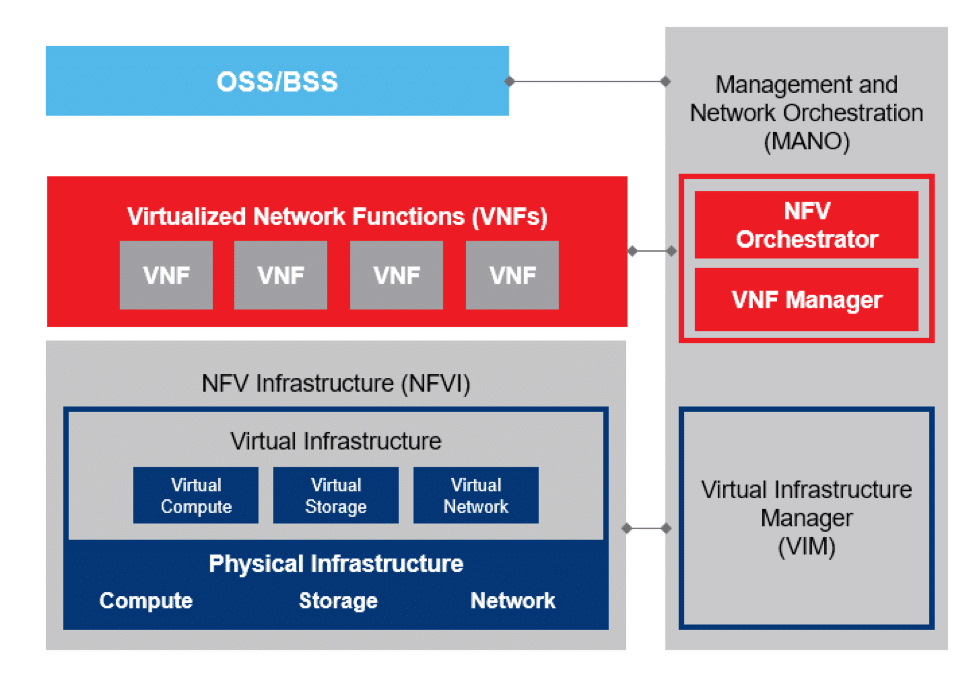Inside NFV’s Virtual Layer: Exploring V-Layer Resources and the Role of VIM
telcomatraining.com – In the rapidly evolving world of telecommunications, Network Functions Virtualization (NFV) has emerged as a transformative technology. At the core of NFV lies the Virtual Layer (V-Layer) — a critical component responsible for virtualizing network functions and decoupling them from proprietary hardware. Understanding how V-Layer resources operate, and the pivotal role of the Virtualized Infrastructure Manager (VIM), is essential for any organization aiming to adopt a cloud-native, agile, and scalable network architecture.
What Is the NFV Virtual Layer?
The Virtual Layer, often referred to as the virtualization layer, sits between the physical hardware and the virtualized network functions (VNFs). It provides an abstraction that allows software-based network functions to run independently of the underlying hardware. This abstraction is what enables NFV to offer flexibility, scalability, and cost-efficiency, compared to traditional hardware-based network solutions.
In the context of ETSI NFV architecture, the Virtual Layer is responsible for:
- Hosting virtual compute, storage, and network resources
- Managing the lifecycle of Virtual Machines (VMs) or containers
- Isolating VNFs for performance and security
- Facilitating communication between VNFs and physical infrastructure
Key Resources in the Virtual Layer
The Virtual Layer encompasses several critical resources that enable virtualized environments to function smoothly:
1. Virtual Compute
Virtual compute resources refer to CPU and memory allocation for VNFs. Through virtualization technologies like KVM, VMware, or container runtimes like Docker, the physical CPU and memory are abstracted into virtual machines or containers that host individual network functions.
2. Virtual Storage
Data storage in NFV is virtualized to allow VNFs to access data quickly, securely, and on-demand. Virtual storage may come from local disk pools or from Software-Defined Storage (SDS) solutions that offer better flexibility and high availability.
3. Virtual Networking
Virtual networking involves creating virtual switches (vSwitches), routers, and firewalls that allow communication between VNFs and with external networks. Technologies such as Open vSwitch (OVS) and SDN controllers play a key role in orchestrating traffic and enforcing policies.
VIM: The Brain Behind the Virtual Layer
The Virtualized Infrastructure Manager (VIM) is the management component responsible for controlling and monitoring the resources in the Virtual Layer. According to ETSI’s NFV MANO framework, the VIM sits under the NFV Orchestrator (NFVO) and VNF Manager (VNFM) and directly interfaces with the virtual infrastructure.
Responsibilities of the VIM:
- Provisioning and managing virtual resources (compute, storage, networking)
- Monitoring resource usage and health
- Allocating resources to VNFs based on demand
- Ensuring compliance with policies such as scaling, high availability, and security
Common open-source VIM implementations include OpenStack, Kubernetes (for container-based VNFs), and VMware vSphere.
Why the VIM Is Essential
Without the VIM, NFV would lack the necessary automation and intelligence to dynamically allocate and scale resources. The VIM ensures that network services can be deployed, modified, and scaled with minimal manual intervention, thereby improving:
- Operational efficiency
- Service agility
- Resource utilization
- Fault tolerance and recovery
Final Thoughts
The success of any NFV deployment depends heavily on how well the Virtual Layer and its resources are managed. The Virtualized Infrastructure Manager (VIM) acts as the orchestrator of this layer, enabling seamless virtualization, automation, and control.
By understanding the function and value of both the Virtual Layer and the VIM, organizations can better prepare for a future where cloud-native networking and 5G readiness are no longer optional, but essential. Embracing these technologies not only reduces costs but also creates a flexible and innovation-driven network infrastructure.







